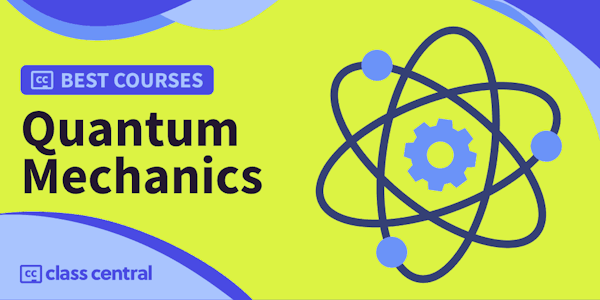This course covers key topics in the use of quantum mechanics in many modern applications in science and technology, introduces core advanced concepts such as spin, identical particles, the quantum mechanics of light, the basics of quantum information, and the interpretation of quantum mechanics, and covers the major ways in which quantum mechanics is written and used in modern practice. It follows on directly from the "Quantum Mechanics for Scientists and Engineers 1" course, and is also accessible to others who have studied some quantum mechanics at the equivalent of a first junior or senior college-level physics quantum mechanics course. All of the material for the earlier course is also provided as a resource. The course should prepare the student well to understand quantum mechanics as it is used in a wide range of current applications and areas and provide a solid grounding for deeper studies of specific more advanced topics.
Overview
Syllabus
Quantum mechanics in crystals
Crystal structures, the Bloch theorem that simplifies quantum mechanics in crystals, and other useful concepts for understanding semiconductor devices, such as density of states, effective mass, quantum confinement in nanostructures, and important example problems like optical absorption in semiconductors, a key process behind all optoelectronics.
Methods for one-dimensional problems
How to understand and calculate tunneling current. The transfer matrix technique, a very simple and effective technique for calculating quantum mechanical waves and states.
Spin and identical particles
The purely quantum mechanical idea of spin, and how to represent and visualize it. The general ideas of identical particles in quantum mechanics, including fermions and bosons, their properties and the states of multiple identical particles.
Quantum mechanics of light
Representing light quantum mechanically, including the concept of photons, and introducing the ideas of annihilation and creation operators.
Interaction of different kinds of particles
Describing interactions and processes using annihilation and creation operators for fermions and bosons, including the important examples of stimulated and spontaneous emission that correctly explain all light emitters, from lasers to light bulbs.
Mixed states and the density matrix
Introducing the idea of mixed states to describe how quantum mechanical systems interact with the rest of the complex world around us, and the notation and use of the density matrix to describe and manipulate these.
Quantum measurement and quantum information
Introducing the no-cloning theorem, quantum cryptography, quantum entanglement and the basic ideas of quantum computing and teleportation, and returning to the idea of measurement in quantum mechanics, including the surprising results of Bell’s inequalities.
Interpretation of quantum mechanics
A brief introduction to some of the different approaches to the difficult problem of understanding what quantum mechanics really means!
Taught by
David Miller
Tags
Reviews
5.0 rating, based on 4 Class Central reviews
4.8 rating at edX based on 15 ratings
-
What a great resource! Prof. Miller's explanation of the density matrix and derivation of the Bloch equations was extremely useful in the graduate level quantum mechanics course I am currently taking. After taking Prof. Miller's QMSE 1&2, I find the graduate level course quite manageable. Thank you Professor for giving me such a firm foundation for more advanced studies.
-
Professor Miller is awesome. He has an obvious passion for the subject. The course is taught in more-or-less the standard fashion, starting with Planck and Einstein, the wave equation, etc. Professor Scott Aaronson comments about this approach: "T…






